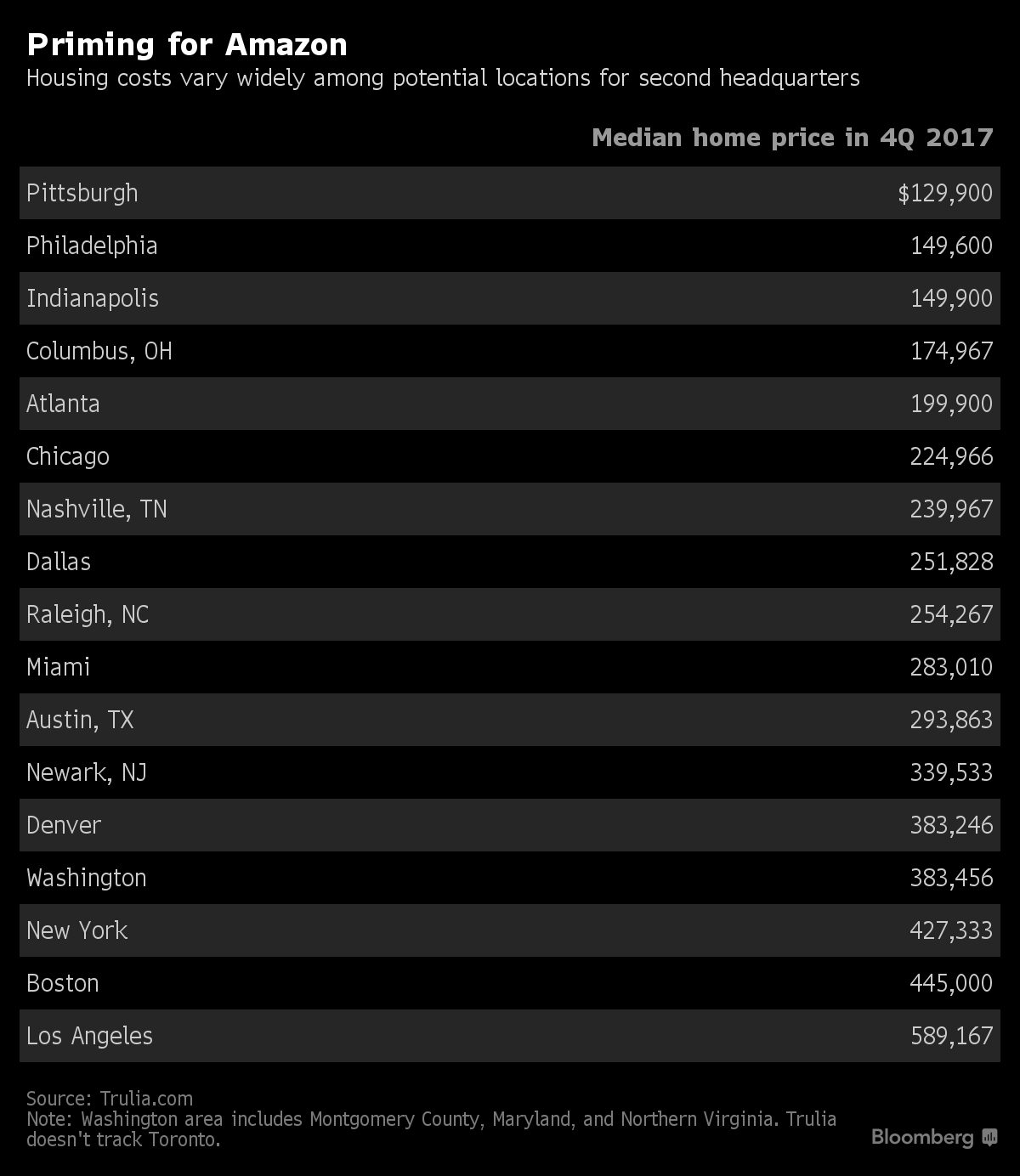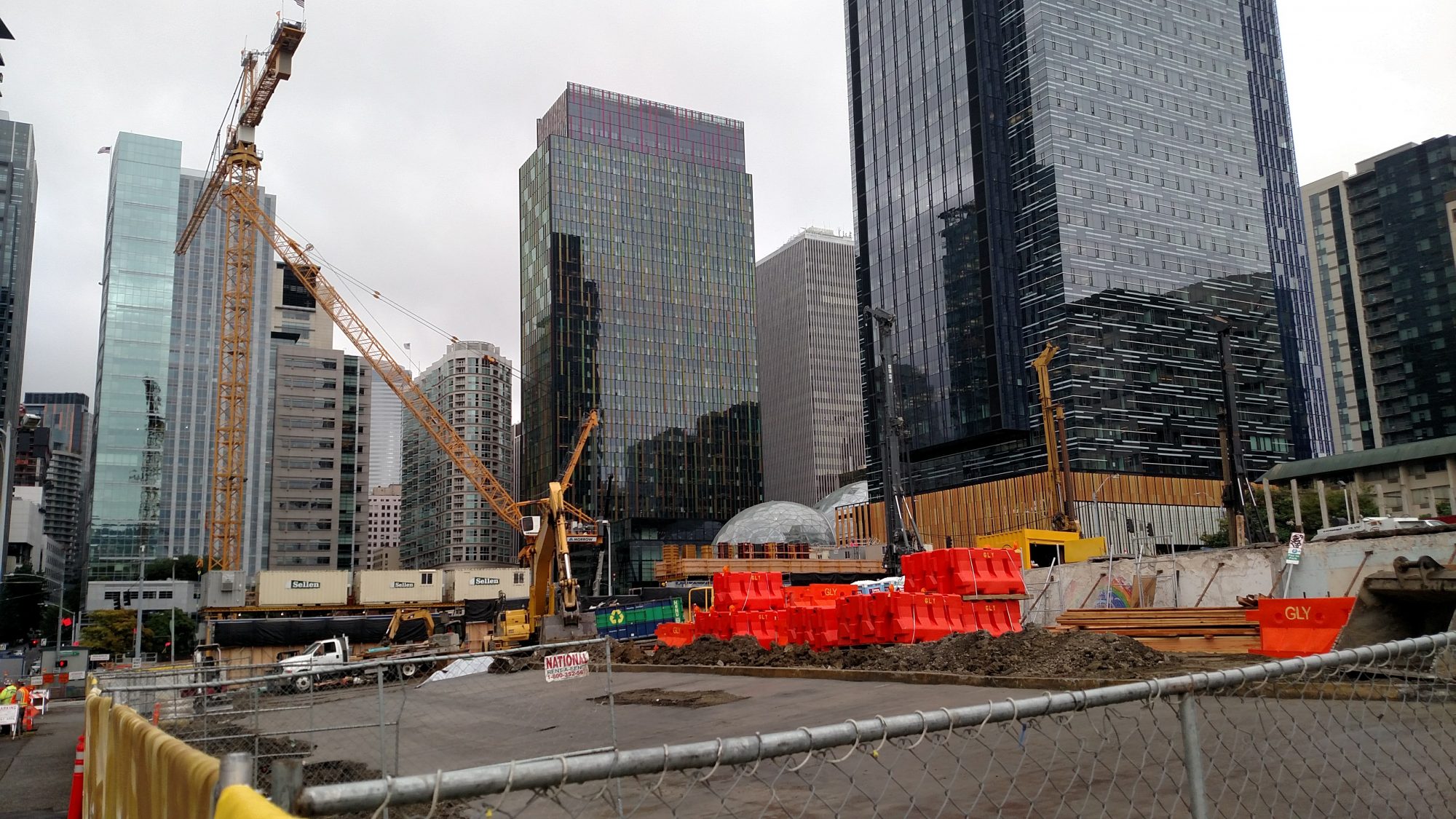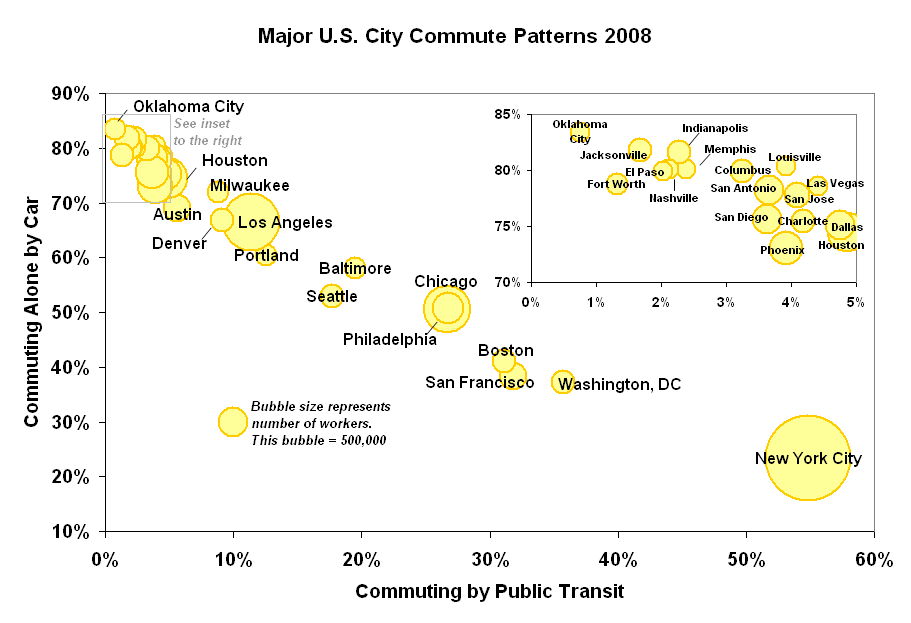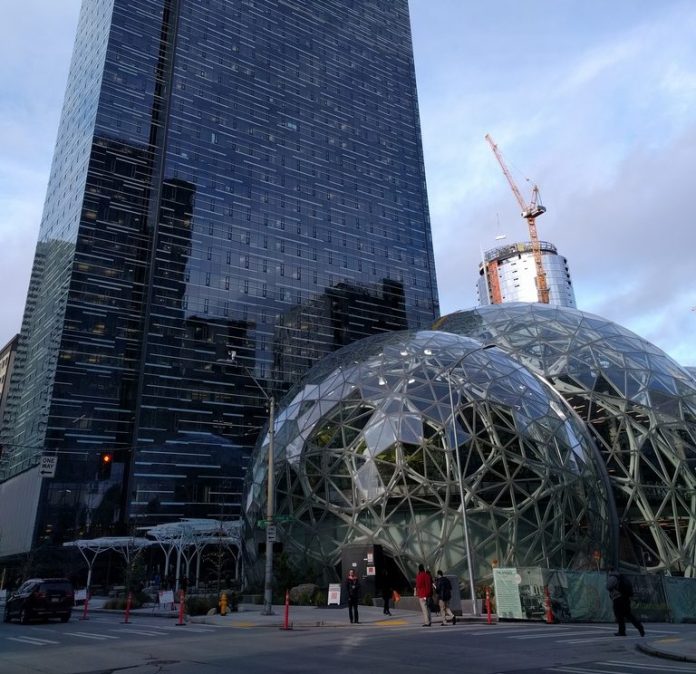Last week Amazon announced progress on locating its second headquarters: 238 applicants have been whittled down to 20 finalists. The top 20 offer some hints at what factors matter most to Amazon. A third of the finalists are in the Acela corridor from Washington DC to Boston. The Washington DC metropolitan area got three finalists, and New York City got two finalists, with neighboring Newark also getting a nod.
One Hope for Canada and One for the West Coast
Of the finalists, only Toronto is outside the United States. Toronto accomplished this without offering tax subsides to the online retailing giant, which suggests that Toronto’s bid had other fundamental advantages–e.g., Canada’s saner immigration policy. Potentially the lack of tax break goodies could mean other cities will win the race to the bottom, looking at it more cynically. That said, Canada offers universal health care and a lower corporate tax rate. Of the 20, only Los Angeles represents the West Coast, which adding weight to reports that Amazon was looking to build “HQ2” in a different time zone.
Critical to remember that the Toronto Amazon HQ2 bid did not offer subsidies as a way to get at the table. Our proposal touted our quality of life, openness to immigration and current/forthcoming transit investments as the key reasons to come. #WeDidItRight
— Jennifer Keesmaat (@jen_keesmaat) January 18, 2018
Burnishing the Rust Belt?
The highly touted Rust Belt angle may have been a bust. The quintessential Rust Belt city, Detroit, failed to make the cut. Midwest cities that did make the cut were already the overachievers that have somewhat defied wider Rust Belt decline–Pittsburgh, Indianapolis, Chicago and Columbus, Ohio. These cities were already were showing signs of resurgence before Amazon came knocking. In other words, Amazon isn’t here to do the heavy lifting; they’re hoping to capitalize on regions already on the up and up.
Housing Cost Factor
Amazon trumpeted that it wanted to expand to a region with reasonable housing costs. Most of the selections reflected that, with significantly lower housing costs than Seattle. A few finalists however, did not do well on this criterion. Los Angeles, Boston and New York have among the most expensive housing in the county. Toronto may be the most expensive of the bunch, and Denver and Washington DC are also fairly costly. Perhaps housing affordability wasn’t the crucial factor that Amazon made it out to be? If affordability is a major factor, Pittsburgh, Philadelphia, and Indianapolis appear to rank as most favorable.

The question remains about how long a metropolitan region would remain affordable once Amazon comes to town. Seattle rents have climbed 50% in the last five years and median home prices have doubled since 2012. Zilliow’s Home Value Index pegged the bottom of the market at $351,000 in 2011; the same index now sits at $718,700. Amazon’s housing impact could be magnified in a smaller housing market. Several of the frontrunners have smaller populations that Seattle. Metropolitan Indianapolis and Columbus each have a population of about two million, while Pittsburgh comes in 2.34 million. Raleigh was the smallest at 1.3 million followed by Nashville at 1.9 million. Amazon’s promised 50,000 high paying jobs would have a big impact in any region, but smaller housing markets may feel it even more. On the other hand, smaller regions may have more greenfield development opportunities than more built out metropolitan regions.

Transit Arms Race
Amazon’s request for proposals indicated it wanted a region with high quality transit. The 20 finalists fall all over the map on this category. New York City clearly leads with the most diversified mode share portfolio, and Chicago, Philadelphia, Boston and Washington DC also boast legacy subway systems. Atlanta got a federally funded heavy rail transit system in the 1970s (the one Seattle famously turned down in a close regional vote) although that hasn’t translated into remarkable transit mode share regionally. Los Angeles doesn’t yet have a world-class subway system but it’s in the process of building one after passage of Measure M in 2016. Toronto’s transit network is booming. Nashville’s transit system is fairly anemic, but if the city passes a big transit package that goes to vote this year could catapult it to a national leader, particularly for a city of its size. Even Dallas is finally seeking to gets its act together on transit, with plans to add a downtown subway to save its light rail network (which is big on track mileage but low on usefulness) from downtown gridlock and mediocrity. Planned improvements could make the bids of cities like Los Angeles, Nashville and Dallas more competitive compared to regions less ambitious on transit. Since some cities on the list (e.g., Raleigh and Columbus) have pretty mediocre transit, Amazon’s final pick could indicate whether the company–and the tech industry more broadly–walks the walk in addition to talking the talk on high quality transit.

Tax Break Arms Race
The top 20 list includes a mix of regions that offered gargantuan tax incentives and regions that centered their pitches on inherent local advantages. Newark’s seven billion-dollar tax incentive package was the largest of all 238 applications. Chicago’s is worth at least $2 billion and Atlanta’s is worth $1 billion. On the flip side, cities like Dallas, Austin, Denver and Nashville didn’t tailor special tax breaks for Amazon–although Amazon may qualify for existing corporate tax breaks regions are in the habit of offering. New York City and Philadelphia promised Amazon ample office space rather than tax breaks in their pitches. Several regions were able to keep their incentive packages secret so far.
It’s also a bit of a secret when Amazon will announce the winner of the HQ2 sweepstakes. All we know is the announcement should come sometime in 2018.
Doug Trumm is publisher of The Urbanist. An Urbanist writer since 2015, he dreams of pedestrian streets, bus lanes, and a mass-timber building spree to end our housing crisis. He graduated from the Evans School of Public Policy and Governance at the University of Washington in 2019. He lives in Seattle's Fremont neighborhood and loves to explore the city by foot and by bike.


